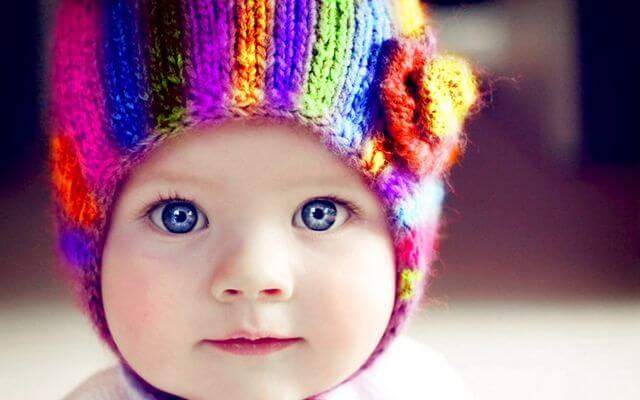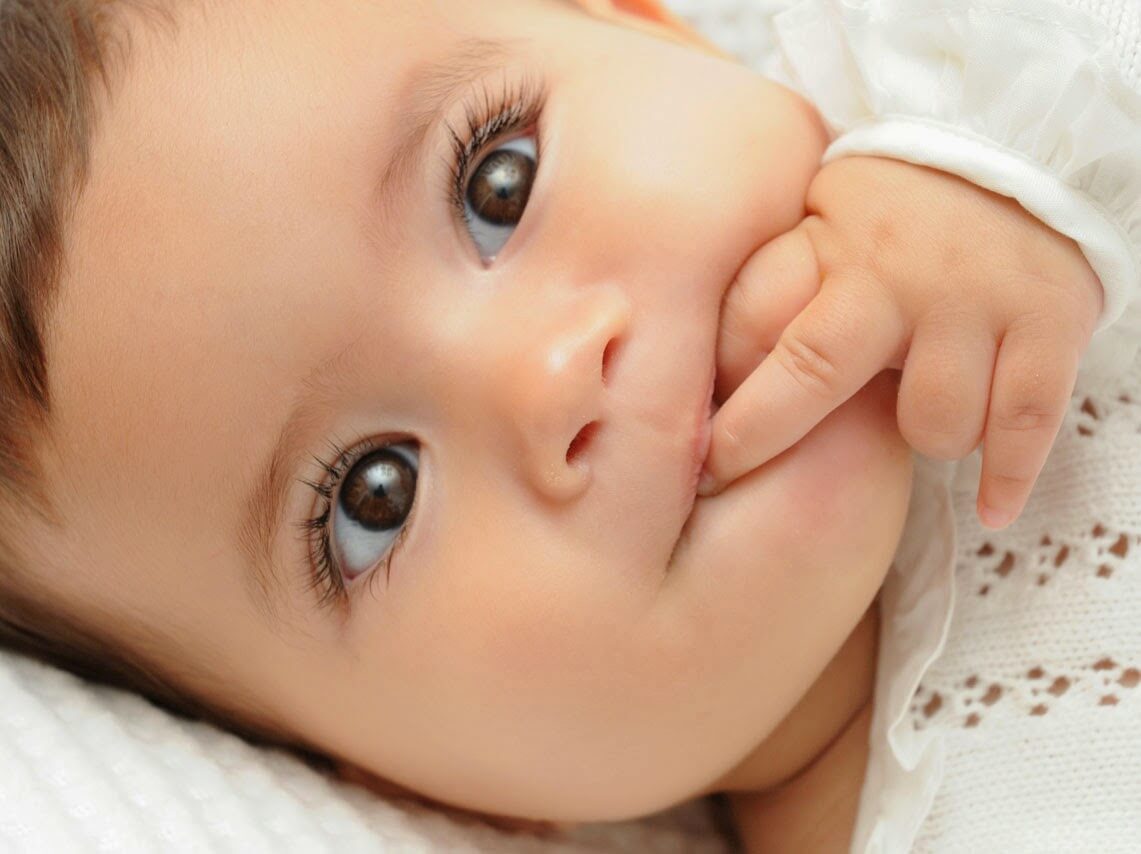The Eye Color of Newborns

The eye color of newborns is always beautiful. We are usually surprised at how awake they look and wonder if they can see us. But above all we wonder what color eyes they’ll have in the future.
Most babies are born with grey eyes. Their little eyes are surrounded by mystery and cause a lot of surprise, however everything has an explanation.
For families in which all members have dark eyes, it is surprising for a baby to be born with lighter-colored eyes. But this will soon change.
The eye color of newborns are light for approximately 9 months. In most cases they begin to slowly darken until they reach their final tone. Even if the baby’s eyes end up being green or blue, the tone will change in the first few months of life.
When a baby is born with dark eyes, the color usually gets a bit darker over time. Between 6-9 months, the baby experiences various phases of eye color. A lot of those times the changes are imperceptible.
Why does the eye color of newborns change?
The skin color and hair color are dependent on a substance called melanin. In the same way the colored part of the eye, known as the iris, is dependent on melanin as well. Melanin is a protein produced by melanocytes. Its main purpose is giving pigmentation to certain tissues.
In newborns, melanocytes are still young and underdeveloped. This causes the color or lack their of that we see in their eyes. The skin color and hair color are also affected by these young melanocytes. For example, babies are usually born with skin that is a bit lighter than it will be when they grow older.

In the first days after birth, the production of melanin is quite scarce. Because of this, the color of the eyes changes progressively. This change is due to the maturation of the melanocytes. Their eye color starts to darken from birth, passing through various hues. The production of melanin also increases in the skin and hair.
Finally, it’s been found that the factors influencing these features are very accurate. Genetics explains what the final eye color of the child will be.
The amount of melanin produced will lead to different eye colors. When production is low, this produces a green, blue or grey color. Medium concentrations produce a hazel color. High production of melanin produces coffee colored or dark eyes.
Other explanations for the change in color
Some people believe there are other forces at work that cause the change of eye color in newborns. For example, some believe that breastfeeding intervenes in the process. However, specialists deny the possible relationship between the two. Moreover there are no studies that have been able to prove that breastfeeding affects eye color.

According to experts, this belief is based on the time of the transition. The transition of the eye color change is roughly the same time as in breastfeeding. The 7-9 months of breastfeeding coincides with the darkening of the eyes in newborns.
During the process of maturation of the melanocytes, most babies are being breastfed. However, the same is true for other systems in the body. According to scientific studies, the process of maturation occurs naturally even when the baby isn’t being breastfed.
Others believe their might be a possible relationship between the change of eye color and UV exposure. Sunlight is believed to increase the production of melanin.
This could be true, because it is only when the baby leaves the uterus that they are exposed to this kind of light. It is also believed that even the eye color of adults can slightly change due to UV light.
The light eye color that newborns have could be due to the dark environment of the uterus. Therefore, after the change in environment the body starts to make the right modifications.
This text is provided for informational purposes only and does not replace consultation with a professional. If in doubt, consult your specialist.








